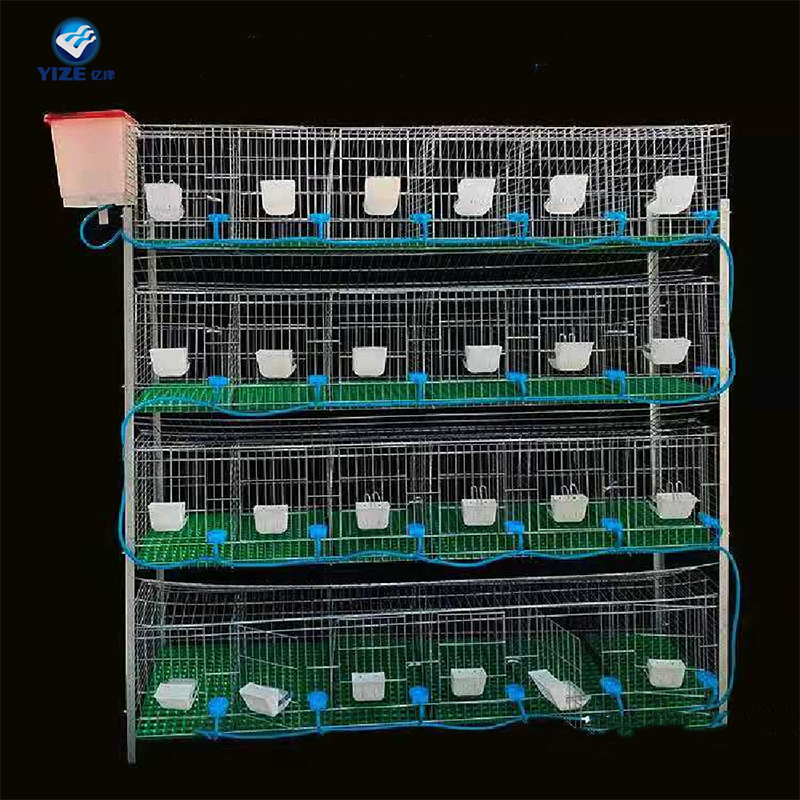efficient exhaust fan solutions for poultry farming to enhance air circulation and bird comfort
Aug . 14, 2024 05:11 Back to list
efficient exhaust fan solutions for poultry farming to enhance air circulation and bird comfort
The Importance of Exhaust Fans in Poultry Farming
In poultry farming, maintaining a healthy environment is paramount for the growth and well-being of chickens, turkeys, and other poultry species. One essential component that plays a critical role in this regard is the exhaust fan. These devices are vital for ensuring proper ventilation, controlling temperature, and managing humidity levels in poultry houses. In this article, we will explore the significance of exhaust fans in poultry farming and their impact on animal welfare and productivity.
Understanding the Mechanism of Exhaust Fans
Exhaust fans are powerful ventilation devices designed to remove stale air, moisture, and heat from poultry houses. These fans work by creating negative pressure within the facility, which allows fresh air to enter from outside. This continuous exchange of air is crucial for several reasons. First and foremost, it promotes the overall health of the birds by ensuring a constant supply of oxygen and reducing the concentration of harmful gases such as ammonia and carbon dioxide.
Temperature Control
Poultry is sensitive to temperature extremes, and proper climate control is vital for their growth. During hot weather, high temperatures can lead to heat stress, negatively affecting feed intake, weight gain, and overall productivity. Exhaust fans help mitigate this risk by expelling hot air and allowing cooler air to circulate throughout the facility. The result is a more stable and comfortable environment, leading to enhanced growth rates and improved feed conversion ratios.
On the other hand, during cold weather, it is also essential to manage heat retention within the poultry house. While exhaust fans are primarily associated with cooling, they can also be part of a comprehensive heating strategy. By controlling humidity and removing excess moisture, these fans prevent the formation of condensation, which can lead to health issues for the birds.
Humidity Regulation
exhaust fan for poultry

High humidity levels in poultry houses can create an environment conducive to the development of diseases and fungal growth. Damp conditions can lead to respiratory problems in birds, which can ultimately affect their productivity. Exhaust fans help regulate humidity by effectively removing excess moisture from the air. This not only improves the health of the flock but also enhances the overall atmosphere within the facility, making it a more conducive environment for growth.
Ammonia Management
One of the most critical aspects of poultry farming is the management of ammonia levels. Ammonia is a harmful gas produced by the decomposition of manure. High ammonia concentrations can lead to respiratory issues and other health problems in poultry. Exhaust fans play a key role in reducing ammonia levels by facilitating the removal of contaminated air. By ensuring proper ventilation, these fans can significantly contribute to the health and welfare of the birds.
Energy Efficiency and Technology
Advancements in technology have led to the development of energy-efficient exhaust fans that not only perform well but also reduce operational costs. Modern fans can be equipped with variable speed drives, allowing them to adjust their operation based on real-time conditions within the poultry house. This adaptability ensures optimal performance while conserving energy, making it a win-win for both the farmer and the environment.
Conclusion
In conclusion, exhaust fans are an indispensable part of modern poultry farming. By ensuring proper ventilation, regulating temperature and humidity, and managing harmful gases such as ammonia, these devices contribute significantly to the health and productivity of poultry. With the continued advancements in technology, farmers have access to more efficient and effective ventilation solutions, ultimately leading to better outcomes for both the animals and their operations. Properly invested in and maintained, exhaust fans serve not only as tools for comfort but also as essential instruments for sustainable and profitable poultry farming.
-
Hot Sale 24 & 18 Door Rabbit Cages - Premium Breeding Solutions
NewsJul.25,2025
-
Automatic Feeding Line System Pan Feeder Nipple Drinker - Anping County Yize Metal Products Co., Ltd.
NewsJul.21,2025
-
Automatic Feeding Line System Pan Feeder Nipple Drinker - Anping County Yize Metal Products Co., Ltd.
NewsJul.21,2025
-
Automatic Feeding Line System - Anping Yize | Precision & Nipple
NewsJul.21,2025
-
Automatic Feeding Line System - Anping Yize | Precision & Nipple
NewsJul.21,2025
-
Automatic Feeding Line System-Anping County Yize Metal Products Co., Ltd.|Efficient Feed Distribution&Customized Animal Farming Solutions
NewsJul.21,2025






